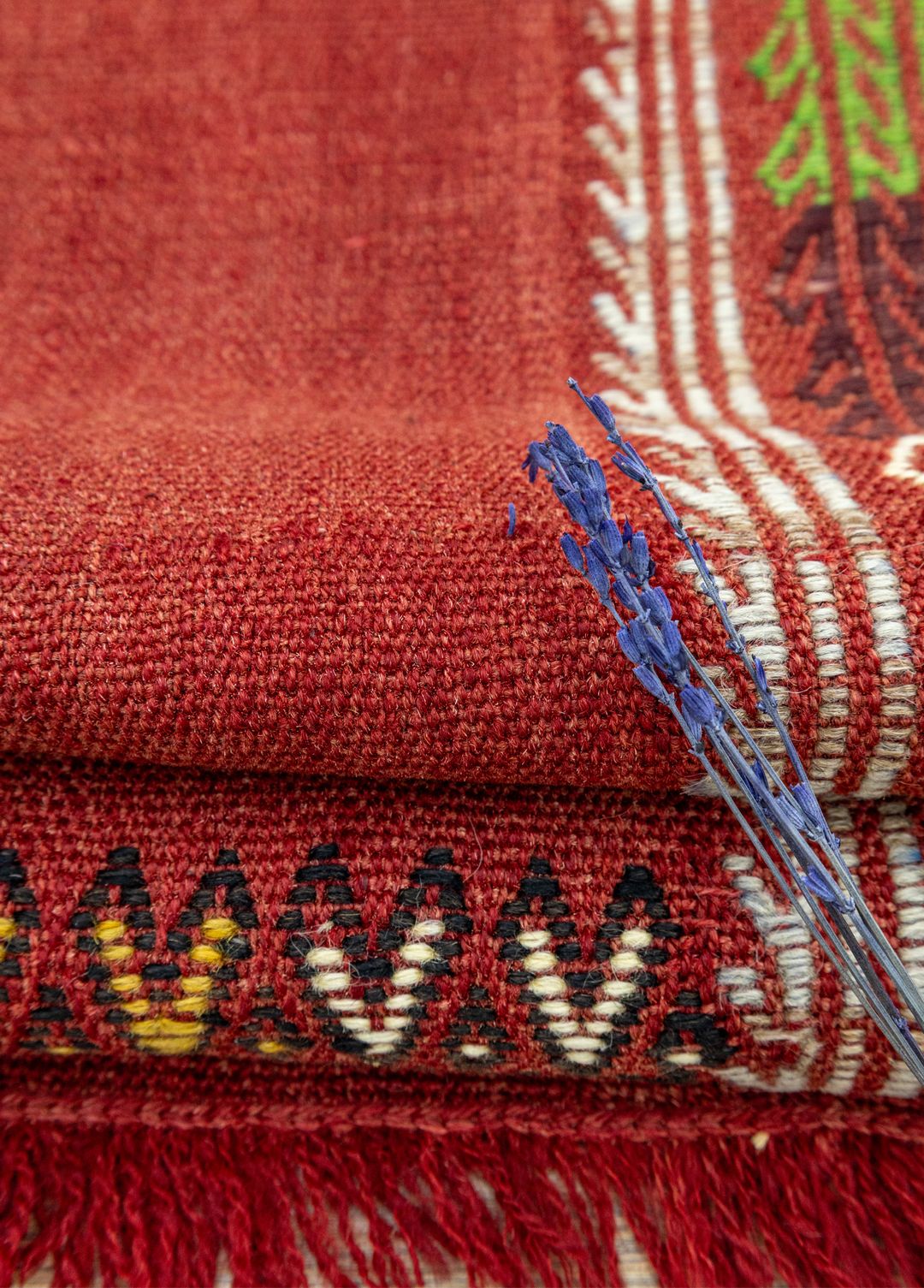Handwoven kilims are representatives of an art and craft that has endured for centuries. Each kilim, woven with meticulous care and dedication, is a valuable part of our cultural heritage. In this blog post, we will discuss the history, creation process, and contemporary significance of handwoven kilims.
History and Origin
The origins of handwoven kilims date back thousands of years. Early examples of kilims can be found in Central Asia and Anatolia. Nomadic communities adopted these kilims not only for their Daily use but also as a form of artistic expression. Each motif, color, and pattern conveys a specific meaning, telling cultural stories.
Creation Process

The creation of handwoven kilims is a labor-intensive and meticulous process. Here are the basic steps of kilim making:
Material Selection: Kilims are typically made from natural materials such as wool, cotton, or goat hair. Wool is the most commonly used material due to its durability and natural insulation properties.
Yarn Preparation: The yarn to be used is thoroughly cleaned and spun before the dyeing process. Natural dyes are used to color the yarns using traditional methods.
Pattern Planning: The designs and motifs of a kilim are usually traditional patterns passed down through generations. Each region has its unique motifs and designs.
Weaving Process: The weaving process is carried out using special tools called looms. This process requires great patience and attention. Each knot is tied by hand, and each row is carefully woven.
Importance of Handwoven Kilims
Handwoven kilims are not just decorative items but also a part of our cultural heritage. They play a significant role in preserving traditional handicrafts and passing them on to future generations. Additionally, handwoven kilims are highly valued in modern decoration due to their unique and original nature.

Kilim Care and Maintenance
Proper care is essential to ensure the longevity of handwoven kilims. Here are some tips:
Regular Cleaning: Regularly vacuum your kilims to remove dust. However, it is important to keep the vacuum’s suction power at a low setting.
Protection from Direct Sunlight: Kilims can lose their colors if exposed to direct sunlight. Therefore, protect your kilim from direct sunlight.
Avoid Moisture and Dampness: Kilim can become moldy in damp environments. Avoid using them in humid places.
Conclusion
Handwoven kilims are unique and valuable Works of art where history and art intertwine. Having handwoven kilims in your home not only adds aesthetic richness but also allows you to keep cultural heritage alive. It is our duty to explore and value these unique Works of art where traditional motifs meet modern designs.